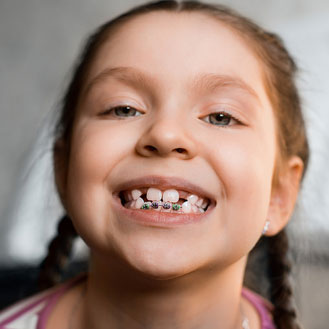
2025-04-18

The advantage of orthodontic treatment includes two phases of therapy
Orthodontic treatment Two-phase therapy is a specialist process that combines tooth decay and physical changes in the face. The goal of the two-phase therapy of orthodontic treatment is to maximize the chances of achieving an ideal, healthy, functional and beautiful outcome that remains sustainable throughout your child’s life.
Delayed treatment
Postponing treatment and delaying it will result in more difficult treatment in the next phase of life, which may not completely correct your baby’s smile. Initial treatment is the most effective treatment to achieve a lasting outcome.
Phase One Treatment
“Under Construction for a Beautiful Smiley Life”
The goal of the Phase One treatment is to help the jaw grow in such a way as to accommodate all the permanent teeth and improve the alignment of the upper and lower jaw. In children, the symptoms of jaw problems are often characterized by their age and height. The upper jaw, which has grown faster or too narrow, can be recognized at an early age. If the children at the age of six have this jaw difference, they are the candidate for the phase one orthodontic treatment. Also, if children under age 8 have abnormal teeth, initial treatment can prevent the need for permanent teeth to be removed at a later stage.
Plan your current plan to keep your child’s smile in the future
Early treatment for children has many benefits. Early treatment may prevent permanent teeth and require surgery to normalize the position of the jaw at the next stage of life
File a case to determine your child’s unique treatment
Collect medical records that your child has a specific treatment plan. Orthodontic Documents To determine the type of device used during the treatment, the duration of the treatment plan is the number of sessions you need to attend an orthodontic clinic. These documents include the primary forms of tooth study, graphic photographs and color photographs before treatment.
During the initial consultation of your child, the doctor specifies the medical documents for the need for initial orthodontic treatment
Resting period
In this phase, the remaining permanent teeth remain free of any moving motion, and they are allowed to perform their normal evolution. At this stage, it is usually not recommended to use the device and stay inside the mouth, as it may interfere with the natural growth of the teeth. It is much better to allow the permanent teeth to continue to grow freely at this stage. A successful initial phase of therapy will lie in a chamber and an environment for the growth of permanent teeth, or be removed from its original position.
Dental Growth Management
At the end of the initial phase, the treatment of the teeth is not in its final position, but this final stage of development will end in the second phase of treatment. Choosing to pull the teeth indicated at this stage is the best possible way to stimulate the growth of permanent teeth at this stage. Therefore, periodic visits to the clinical checkups, which are usually every six months, are necessary.
Phase II Treatment
“Stay cool and healthy”
The main purpose of the second phase of the treatment is to ensure that each tooth is in its precise position and a precise harmony between them and the lips and species and the tongue, and ultimately with other teeth. When this balance prevails between the teeth, they do their normal and normal work. In the second phase of orthodontic treatment, both jaws and teeth are usually covered with orthodontic brackets.
At the onset of the first phase of therapy, orthodontic medical records were collected and the diagnosis and treatment plan was finalized. A special type of orthodontic device is selected in the first phase of the treatment for teeth and jaws. The second phase of therapy begins when all permanent teeth have been developed, usually the braces on the teeth are placed in about 8 to 24 months of maintenance after the orthodontic treatment at the end of the second phase of the treatment, which will consist of a tooth arrangement and beauty Keep your child’s smile.





Rate this article